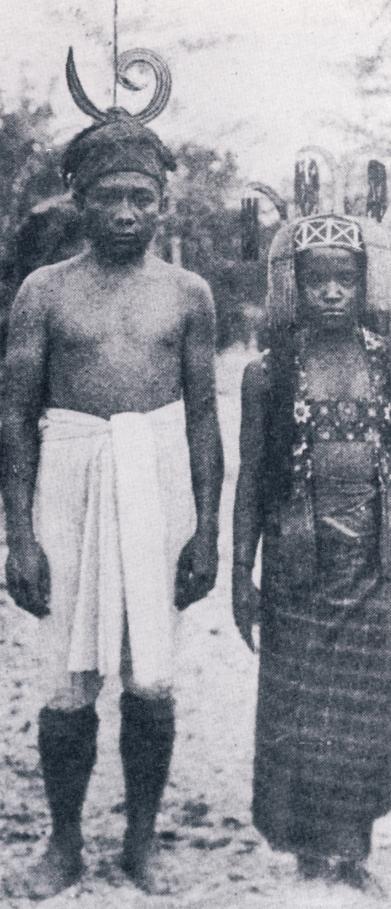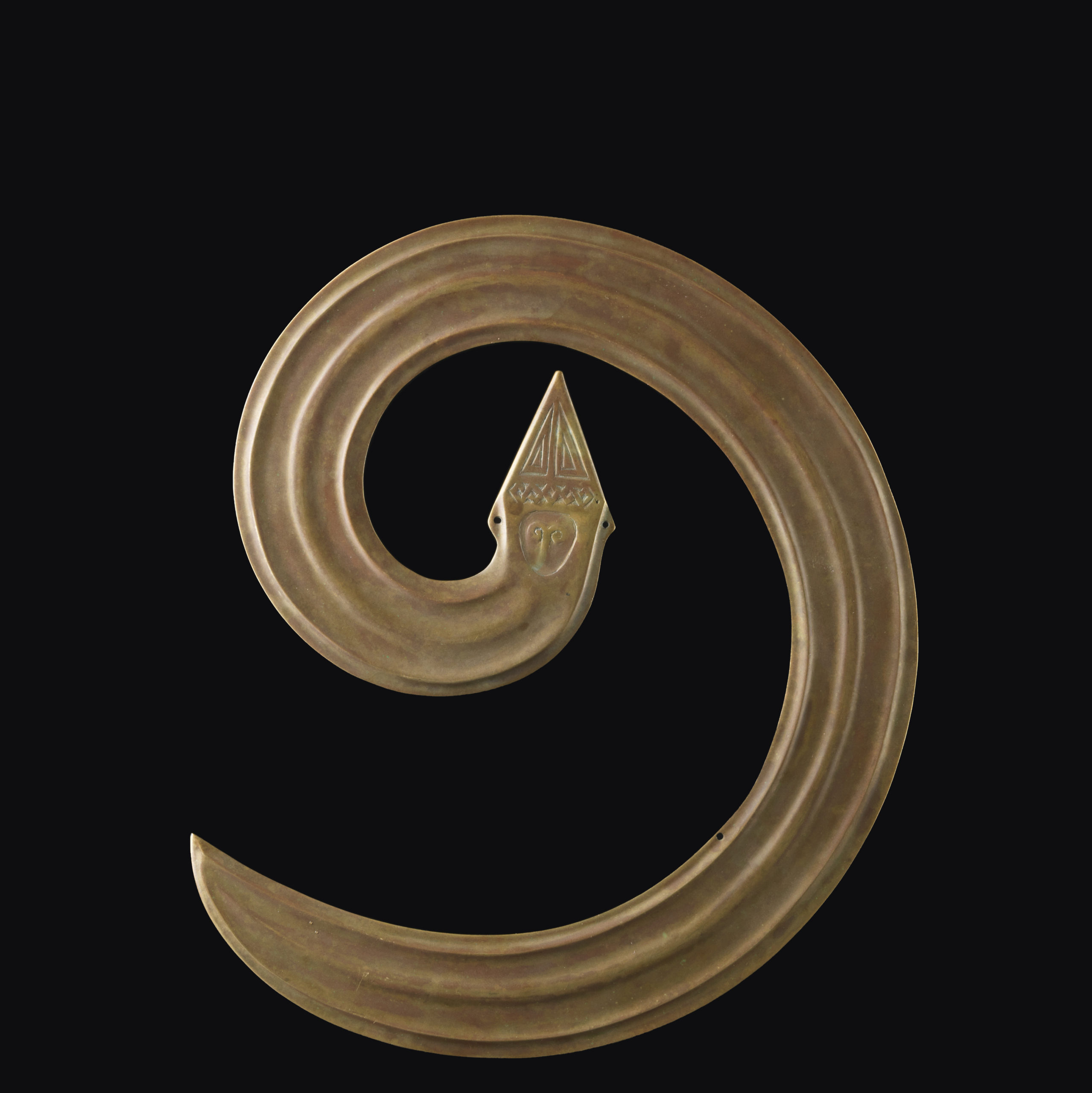Hat ornament „sanggori“
This linear brass chased hat ornament in the shape of a snake has a balanced form and is engraved with diamond and triangle patterns and an implied spiral pattern on the head of the snake. The small holes serve to attach it to the hat.
The serpentine shape symbolises the underworld, defence and fertility. This snake element was used on various occasions. For example, it was worn by men on their hats in warlike conflicts, was supposed to offer protection and, in a highly polished version, irritate the enemy. During healing rituals it was placed on the head of the sick person and after death it was used, among other things, for a second burial at an effigy of the dead person.
All important primary sources, such as Sarasin, Hissink, Grubauer and others agree that this headdress was worn exclusively by men, and this especially during war campaigns, healing ceremonies and burial rituals. High-ranking ancient kulawi toraja and shamans, tobalia, wore the bronze snake vertically on their heads, the latter especially during healing and weather spells, and experienced warriors during headhunting expeditions. The snake is stupendously reminiscent of the snake effigies on Formosa, especially the Rukai and Paiwan. Among the Pamona and Mori, the metal snake was placed on a wooden head, which was placed on the bundled bones of high-ranking male ancestors, while the bones of high-ranking women were provided with wooden effigies with earrings.There used to be shrines in Central Sulawesi in front of which life-size wooden dolls were placed with such metal snakes as headdresses. They are probably closely related in meaning to the better-known tau-tau of the Sa’dan-Toraja. The fact that this serpent figure is directly connected with “sensitive” actions such as war campaigns, invocation of the weather gods in the context of agriculture and burial or rituals of passage, and that in many accounts the serpent in Southeast Asia is seen as a male ancestor and also the former initiator of headhunting, indirectly means that the mythical serpent as an ancestor and role model quasi observes and “blesses” these actions. As a warrior, one identified in a certain way with her or him as an ancestor, just as on Formosa.
| Object | Hat ornament “sanggori“ |
| Culture | Sulawesi, Toraja, Indonesia |
| Time | 19th – 20th century |
| Dimensions | Height 22,50 cm, Width 22 cm |
| Material | Brass |






